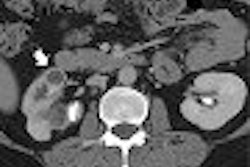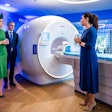Virtual colonoscopy providers have been adding IV antispasmodic agents, such as glucagon and Buscopan, to the procedure for years. In doing so, they aim to improve colonic distension while facilitating the exam for patients. Do they work?
Dear AuntMinnie Insider,
Some virtual colonoscopy providers have been adding IV antispasmodic agents, such as glucagon and Buscopan, to the procedure for years. In doing so, they aim to improve colonic distension while facilitating the exam for patients.
Really, the only question (beyond regulatory issues, costs, staff time, and contraindications) has been that of performance. Can these drugs really improve colonic distension, or make virtual colonoscopy more comfortable?
The implications are profound. Better distension equals more-diagnostic CT images. Easier procedures mean better compliance with follow-up exams, which, after all, middle-aged folks will be asked to undergo periodically for the rest of their lives.
Two original studies highlighted in this Insider issue have important things to say about the matter. First, radiologists from Charité Hospital and Humboldt University in Berlin found that one agent significantly improved colonic distension in 150 patients -- in contrast to the conclusions of some other researchers.
Meanwhile, the virtual colonoscopy team from the University of Rome "La Sapienza" examined not only distension, but whether antiperistaltic agents really make virtual colonoscopy better for patients. You may be surprised by the answers in this issue's Insider Exclusive, made available to our Insider subscribers before other AuntMinnie members can read it.



















